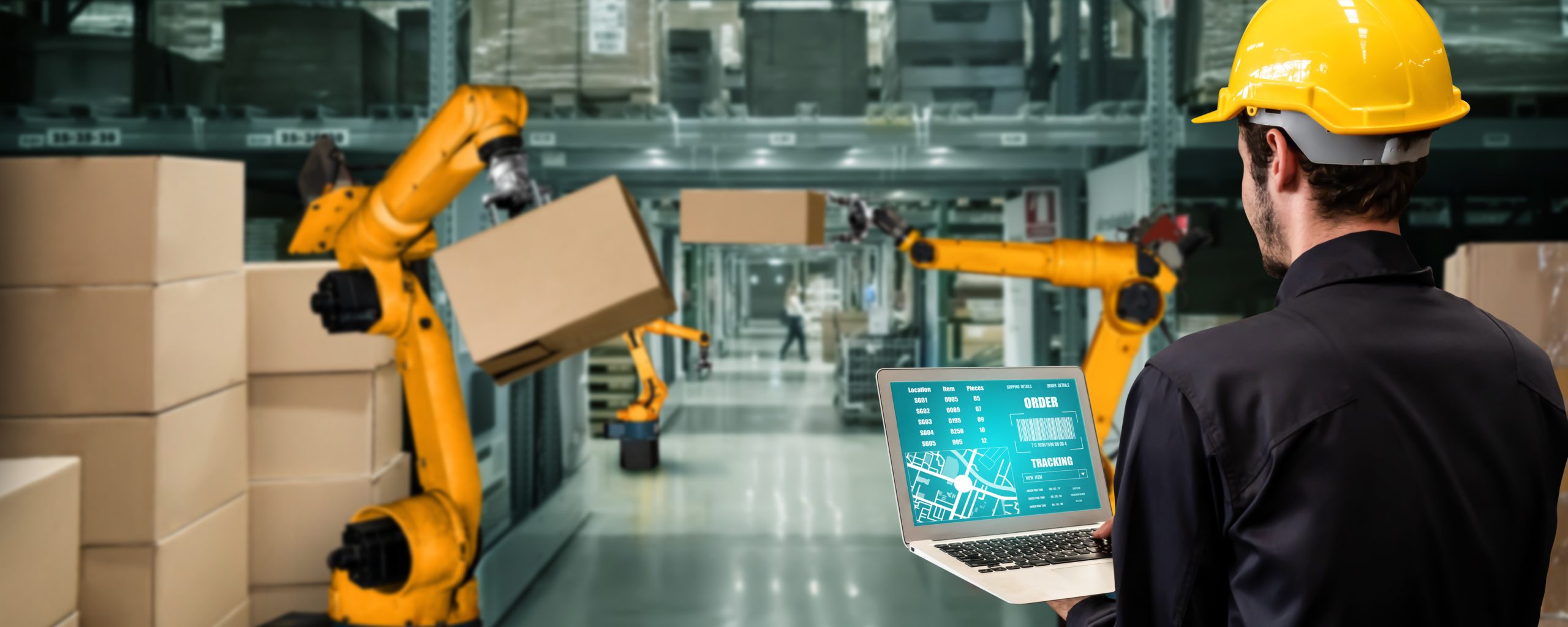On the shopfloor of a Dutch machine manufacturer called Hankamp Gears, workers remove bulky equipment from a pallet, lift the material above their shoulders and painstakingly attach screws to it. Then helping hands suddenly show up to do the heavy lifting, allowing the workers to focus on the job of fastening.
But the hands aren’t human. They belong to “collaborative robots”, or cobots. They’re part of a research project that received EU funding to develop a new generation of human-robot systems able to improve conditions for workers in manufacturing and increase industrial productivity.
From pains to gains
During the project, called SOPHIA, researchers have mounted sensors on the cobots. Combined with machine learning to process data, the sensors measure the workers’ movements to gauge whether tasks needed to be altered or loads redistributed to suit the people – without them even noticing.
‘Cobots can improve productivity and the way people work,’ said Dr Arash Ajoudani, head of the Human-Robot Interfaces and Interaction laboratory at the Italian Institute of Technology in Genoa. ‘If a person is performing a task with a cobot instead of another person, the cobot can change its way of operating to put everything in favour of the person.’
Ajoudani leads SOPHIA, which is due to end in April 2024 after four and a half years including a six-month prolongation. It has brought together experts from organisations in six European countries. Besides Italy, the partners are from Belgium, France, Germany, the Netherlands and Slovenia.
The researchers’ main takeaway is that automation in the manufacturing sector is a big opportunity for companies and workers rather than a serious threat to jobs. That’s because, with the help of cobots, workers are freed up for more skilled tasks and become more valuable to employers.
‘The problem is not robots taking jobs,’ Ajoudani said. ‘The problem is finding enough people to do low-skilled jobs.’
He highlighted the point with an example from agriculture, saying many low-skilled roles that were once commonplace have all but died out.
‘Nobody knows how to milk a cow, but 150 years ago, if you didn’t, you wouldn’t survive,’ Ajoudani said. ‘Maybe in 100 years a worker won’t need to be able to lift and move a box, just how to programme a robot to do it. Those jobs eventually – very gradually – disappear.’
Smooth operators
The SOPHIA team has worked with manufacturers in the automotive sector – German carmaker Volkswagen as well as Hankamp Gears among them – to design cobots that behave as factory-floor workers’ allies.
Ajoudani said the next step is to improve cobots’ ability to act on their own. That in turn requires specific training for the people who work with the cobots and oversee their performance.
“
The problem is finding enough people to do low-skilled jobs.
‘To get there we need to make them collaborative, combining human supervision skills with robots’ sturdiness,’ Ajoudani said.
SOPHIA is part of a series of EU-funded research projects to advance the possibilities for robots and other emerging machines to work alongside people in ways that improve both worker wellbeing and business efficiency.
The whole idea is called “Industry 5.0” – the European Commission’s approach to placing workers at the centre of production as the EU manufacturing sector undergoes a digital and green transformation.
Ensuring mental wellbeing in the workplace of the future is one element of the overall strategy.
A separate EU-funded research project examined whether cobots can make workers happier. Called MindBot, the project ended in September 2023 after almost four years.
It brought together Belgian, Croatian, German and Italian researchers who work for technology companies, manufacturers and public agencies and who focus on everything from psychology to engineering.
Going with the flow
The MindBot team based its work on the psychological concept of “flow” – in which people feel motivated and focused when their skill level matches the task at hand.
‘No one can be in a state of flow 100% of the time,’ said Dr Fabio Storm, a researcher at the Italy-based IRCCS Eugenio Medea scientific institute, which led the project. ‘We wanted to see if we could understand when flow was happening.’
The team started out by observing the use of cobots and their interactions with people in several manufacturing facilities, including in the automotive and electronic-components sectors.
Questionnaires and observation helped establish a baseline of the physical and mental effort required by workers who interacted with robotic partners.
“
It is important to fit the job to the person, not the opposite.
The researchers then simulated realistic shifts for volunteers in a lab, working with a robotic arm to which technological modules had been added. Aided by video-based algorithms and artificial intelligence, optical sensors helped to measure the levels of physical fatigue of the human workers.
The cobot was programmed to respond to the data provided by the sensors, slowing down to match each human worker’s pace if it ebbed towards the end of a shift.
The team also developed an avatar for the cobot on a tablet to interact with the workers. That wasn’t too much of a stretch for the workers as many had already come up with nicknames – one was “Robbie” – for their cobot colleagues, according to Storm.
Information gleaned from the questionnaires helped the team fine-tune the technologies to improve the tasks.
‘Many of the areas we looked at don’t really focus on the technology but on its effect on human workers,’ said Storm.
Inclusive angle
Another aspect of the MindBot research on cobots explored how companies can better integrate autistic people into the workforce.
With the aid of psychologists, the team developed information for workers to help prepare them for any particularly sensitive aspect of the job or environment – for example, if they would need to get used to loud noises or bright lights. That included mapping out specific tasks step-by-step to make it easier for workers to anticipate what they would need to do.
‘It is important to fit the job to the person, not the opposite,’ Storm said. ‘We wanted to show that manufacturing could be an employment option for autistic people.’
MindBot has submitted related employment guidelines to the European Commission for review and hopes that they’ll be published.
In any case, the work done under the project won’t end here because the team members plan to investigate together other aspects of how robotics can improve workplace conditions.
‘Many of MindBot’s tools, methods and findings have already been used in other activities or will be,’ Storm said.
Research in this article was funded by the EU. The views of the interviewees don’t necessarily reflect those of the European Commission. If you liked this article, please consider sharing it on social media.



